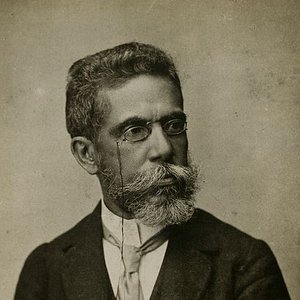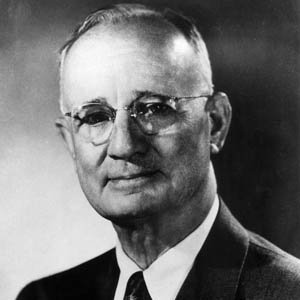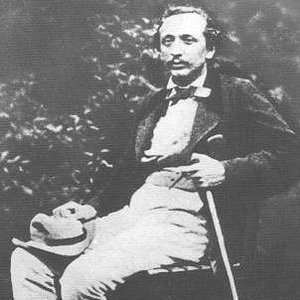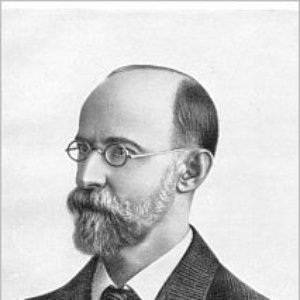Biography
Mircea Eliade was born in Bucharest, Romania, as the son of Georghe (Ieremia) Eliade, an army officer. He had changed, according to Eliade, his name from Ieremia to Eliade due to his admiration for the writer Eliade-Radulescu. The family moved from Bucharest to Rimnicu-Sarat and later to Cernavoda. "In my memory," Eliade wrote in his autobiography, "that time spent there between the Danube and the brick-colored calcinated hills, where wild roses and tiny flowers with pale dry petals grew, is always lighted with sunshine." At school he was interested in biology and chemistry, and he had his own small laboratory. He read much, and increased this time reading books by sleeping only five-six hours. While collecting material in Italy for his study on Renaissance philosophers, he read Surendranath Dasgupta's work A History of Indian Philosophy, which impressed him deeply. After graduating in philosophy at Bucharest in 1928, he studied in India under Dasgupta at the University of Calcutta. Eliade was a talented student, but his relationship with Dasgupta became strained when he fell in love with Dasgupta's daughter Maitreya. During this period he wrote the erotic novel ISABEL SI APELE DIAVOLULUI (1930).
His experiences in the Himalayas, at Swami Shivananda's ashram, where he went to meditate, Eliade depicted in the novel MAITREYI (1933), which became a success. Eliade considered his tantric experiments in the Himalayas with the South African Jenny a proof that he had not understood India. "My vocation was culture, not sainthood." After military service Eliade took his doctorate in 1933 - his thesis dealt with the history of yogic techniques. In the same year Eliade was appointed associate professor in the faculty of letters at Bucharest University. In 1934 he married Nina Mares; she died of cancer in 1944. After publishing DOMNISOARA CHRISTINA (1936) Eliade was accused of pornography and dismissed from his office for a short time. The protagonist in the novel, based on Rumanian folk stories, was a strigoi, a ghost or vampire. The story dealt with the meaning of erotic life and death in human life.
In the 1930s and 1940s Eliade published several works of fiction. The unifying element of Eliade's early fiction is a strong, autobiographical bent. Isabel si apele diavolui was a thinly disguised story of a love affair between a European man and an Indian girl. In INTOARCEREA DIN RAI (1934) and HULIGANII (1935) the author went beyond his personal self, and depicted the 20th-century reincarnations of the older 'nihilists'. The 'hooligan' in the title referred to a person, who is guided by his inner visions and youthful energy, and who doesn't approve of the rules or beliefs of the outside world. LUMINA CE SE STINGE (1934) was an experimental novel using a Joycean stream-of-consciousness technique. Eliade's growing interest in the supernatural was seen in Domnisoara Christina, SARPELE (1937) and SECRETUL DOCTORULUI HONIGBERGER (1940, Two Tales of the Occult), which included the tales 'Nopti la Serampore' and 'Secretul doctorului Honigberger'. The title of the book referred to Dr. J.M. Honigberger, writer of the book Thirty-five Years in the East (1952).
In 1938 Nae Ionescu, professor at the faculty of philosophy, was arrested and Eliade was dismissed as his assistent. Ionescu was accused of being member of the Iron Guard, an extreme-right-wing Romanian organization, anti-Semitic, with Nazi sympathies. Soon also Eliade was arrested and he spent a short time in a concentration camp. From 1940 Eliade worked as a Romanian cultural attaché in London and in Lisbon (1941-44). After WW II he did not return to his home country, but held posts at various European universities. He lectured at the Sorbonne and taught for a while at the École des Hautes Ètudes and elsewhere. His friends during this period included Eugène Ionesco, Georges Dumèzil, and Georges Bataille. In 1950 he married Christinel Cotrescu. The Forbidden Forest, which Eliade considered his major novel, appeared in 1954.
Eliade started to write The Myth of the Eternal Return in 1945, in the aftermath of World War II, when Europe was in ruins, and Communism was conquering Eastern European countries. The essay dealt with mankind's experience of history and time, especially the conceptions of being and reality. According to Eliade, in modern times people have lost their contact with natural cycles, known in traditional societies. Eliade saw that for human beings their inner, unhistorical world, and its meanings, were crucial. Behind historical processes are archaic symbols. Belief in a linear progress of history is typical for the Christian world view, which counters the tyranny of history with the idea of God, but in the archaic world of archetypes and repetition the tyranny of history is accepted. Stoics created from the concept of the eternal cycle a theory which embraced the whole universe. Eliade contrasts the Western linear view of time with the Eastern cyclical world view. In the 19th century Nietzsche's criticism of Christian dogmas brought back the idea of the eternal cycle to Western discussion. These ideas were further developed by Oswald Spengler in his study The Decline of the West (1918-1922).
Eliade's major theoretical and scholarly works in the 1940s and 1950s include TRAITE D'HISTOIRE DES RELIGIONS (1949, Patterns of Comparative Religion), Le mythe de l'éternel retrour, and MYTHES, RÉVES ET MYSTÈRES (1957, Myths, Dreams, and Mysteries ). HISTOIRE DES CROYANCES ET DES IDÉES RELIGIEUSES (3 vols. 1976-1983, A History of Religious Ideas) has been called the synthesis of Eliade's work as a scholar. "The breadth and depth of Eliade's learning," wrote Roger Corless, "which astonished all who met him, his reverence toward the tradition he studied, and his intense, infectious enthusiasm, were an assurance that, if anyone could find what was religious about religion(s), he could. I believe the record shows that he could not. As a result, we now know a great deal more about religion(s) and we can ask totally new questions about it/them." ('Building on Eliade's Magnificent Failure, in Changing Religious Worlds: The Meaning and End of Mircea Eliade, ed. by Bryan S. Rennie, 2000).
In 1956 Eliade joined the faculty of the University of Chicago. Eliade remained in the United States until his death on April 23, 1986. Five years later the Divinity School of the University of Chicago became, dramatically, the scene of Ioan Culianu's death. Culianu - the professor of the history of religion, Eliade's professional heir - was killed in the restroom. He suspected that - allegedly - Eliade had been associated with the Iron Guard. After Eliade's death he started to develop his own theory of history. (see Eros, Magic, and the Murder of Professor Culianu by Ted Anton, 1997)
A central theme in Eliade's works was that the archaic religions made sacred the world in a fashion no longer available. Through the understanding of the relationship between the sacred and the profane it is possible to begin to understand the world of the past. Eliade's creative hermeneutics has received considerable criticism, and it has been said that his "main position is shrouded in ambiguities". Claude-Henri Rocquet has suggested the reader of Eliade is involved in "a hermeneutics without end, since even as we read Eliade, we are interpreting him, just as he is interpreting some Iranian symbol".
Eliade was a Christian and Jungian - he met Carl Jung for the first time in 1950, and two years later he interviewed Jung at the Eranos Conference. "The modern world is desacralized," Jung said in the interview, "that is why it is in a crisis. Modern man must rediscover a deeper source of his own spiritual life." Also Eliade's works, such as Myths, Dreams and Mysteries, and ASPECTS DU MYTHE (1963, Myth and Reality), stressed the relevance of ancient religions for contemporary man. However, Jung insisted that the images of archaic man are much closer to the European and American psyche than Eliade admitted. Eliade later stopped using the term "archetype", which is familiar from Jung's works, in order to avoid Jungian and other misinterpretations.
In LE SACRÉ ET LE PROFANE (1959, The Sacred and the Profane) Eliade argued that "the manifestation of the sacred ontologically founds the world." The traditional man, 'homo religiosus', had a strong will to live within the sacred.or near the sacred objects. A sacred place possesses an unique existential value for religious man, but for nonreligious man, space is neutral. Although modern man seems to experience the world completely as profane, ancient myths, taboos, and rituals still nourish life in the West, but in a corrupted form.
According to Eliade, shamanism is "one of the archaic techniques of ecstasy - at once mysticism, magic, and 'religion' in the broadest sense of the term". He wanted to restrict the term 'shaman' to those who went into trances and who would address the tribe through a spirit or would visit the spirit world and return. James Frazer described bluntly the evidence of superhuman powers in The Golden Bough (1890) as spurious, but Eliade himself was convinced that shamanism had a paranormal component. In Shamanism (1968) he argued that epics of ancient poets and certain kinds of fairy tales derive from ecstatic journeys and mystical flights. Throughout his life Eliade believed that there are things in life that cannot be explained.
In his novels Eliade used the conventional repertory of fantasy: vampires, serpents, ghosts, time warp, searches for immortality. Most of Eliade's postwar fiction dealt with the hidden world behind everyday reality. Among his masterpieces is FORÊT INTERDITE (1955, The Forbidden Forest), which appeared in English in 1978. PE STRADA MANTULEASA (1968, The Old Man and the Bureaucrats) is an allusive and symbolic novella in which a schoolteacher detained for questioning by Communist authorities beguiles his captors with stories, as the enslaved Sheherazade in The Arabian Nights.
Artist descriptions on Last.fm are editable by everyone. Feel free to contribute!
All user-contributed text on this page is available under the Creative Commons Attribution-ShareAlike License; additional terms may apply.








